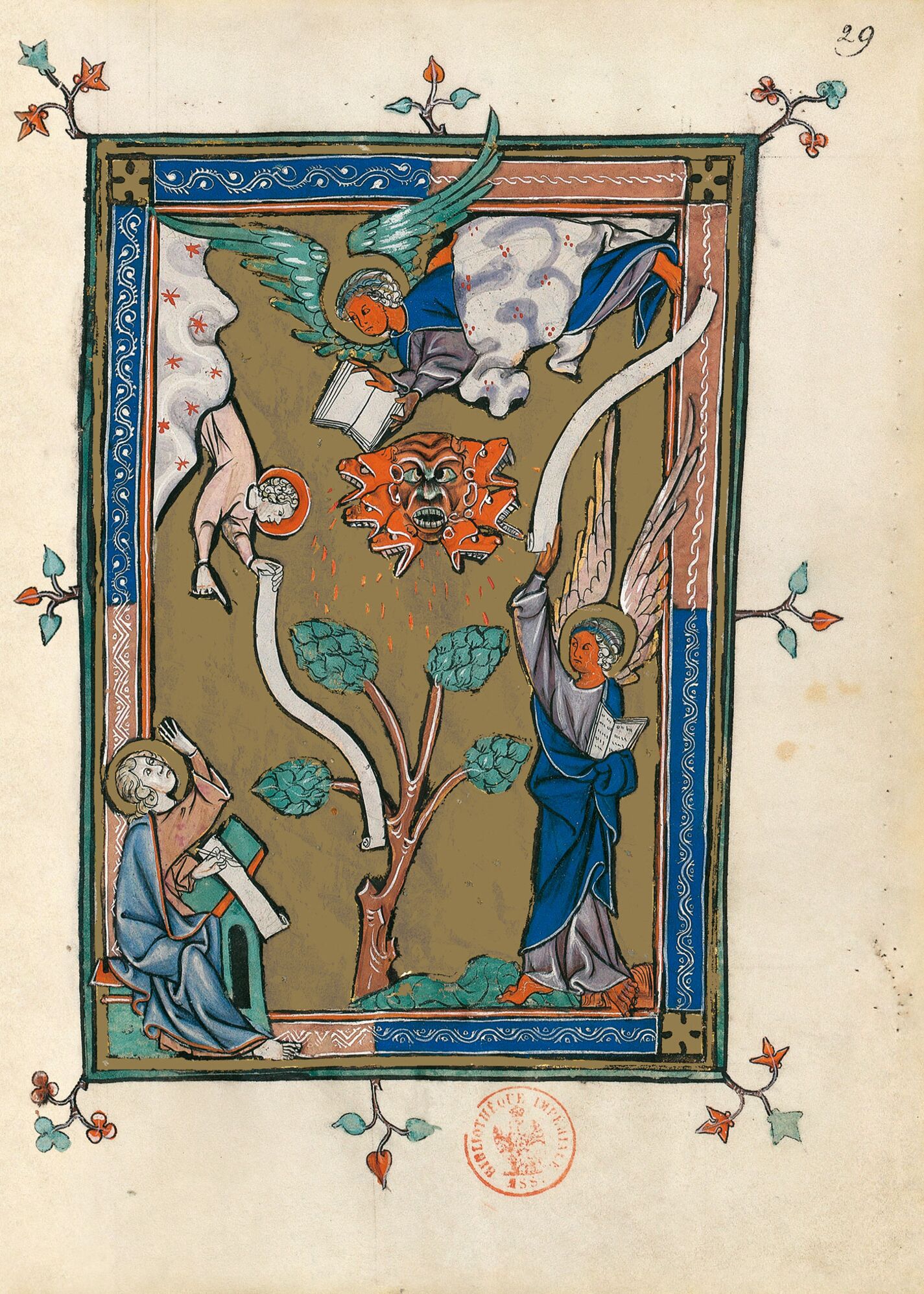Simultaneous visions, the formal portrayal of an oral message: these are the challenges facing the illustrator, particularly in this apparition of the angel descending from heaven enveloped in a cloud which, according to the author of the gloss, symbolises the flesh in which the Word was made man. Hence the author deems this angel, whose reddish feet and face blaze like fire, to symbolise Christ. The diadem upon his head evokes a rainbow, a sign of propitiation following the covenant entered into with Noah.
Towering above creation, he stands upon both the land and the sea, subjugating the world of the impious and the treacherous. The fearsome voices of the seven thunderbolts speaking ineffable words boom out. The thunderbolts represent God’s omnipotence. The illuminator conveys only their frightening appearance, portraying them as a seven-headed monster in the middle of a golden heaven spitting out the flames of their mysterious words. Holding in his left hand a small, open book, which must not be confused with the scroll with seven seals containing the divine mysteries, the angel with the flaming face raises his right hand towards heaven and swears in a roar that the divine mystery is about to be fulfilled “according to the good news God gave his servants, the prophets”.
Marie-Thérèse Gousset and Marianne Besseyre
Illuminated Manuscripts Research Center, Bibliothèque nationale de France
Fragment of the Apocalypse of 1313 commentary volume

Simultaneous visions, the formal portrayal of an oral message: these are the challenges facing the illustrator, particularly in this apparition of the angel descending from heaven enveloped in a cloud which, according to the author of the gloss, symbolises the flesh in which the Word was made man. Hence the author deems this angel, whose reddish feet and face blaze like fire, to symbolise Christ. The diadem upon his head evokes a rainbow, a sign of propitiation following the covenant entered into with Noah.
Towering above creation, he stands upon both the land and the sea, subjugating the world of the impious and the treacherous. The fearsome voices of the seven thunderbolts speaking ineffable words boom out. The thunderbolts represent God’s omnipotence. The illuminator conveys only their frightening appearance, portraying them as a seven-headed monster in the middle of a golden heaven spitting out the flames of their mysterious words. Holding in his left hand a small, open book, which must not be confused with the scroll with seven seals containing the divine mysteries, the angel with the flaming face raises his right hand towards heaven and swears in a roar that the divine mystery is about to be fulfilled “according to the good news God gave his servants, the prophets”.
Marie-Thérèse Gousset and Marianne Besseyre
Illuminated Manuscripts Research Center, Bibliothèque nationale de France
Fragment of the Apocalypse of 1313 commentary volume